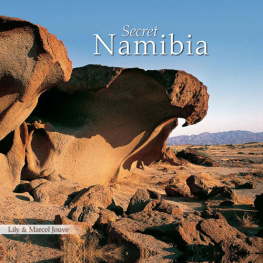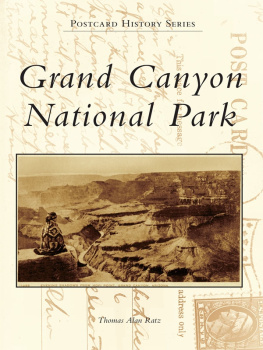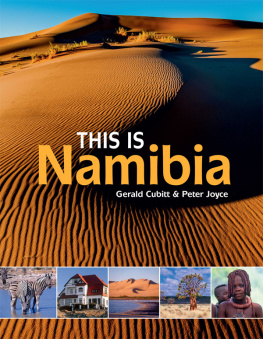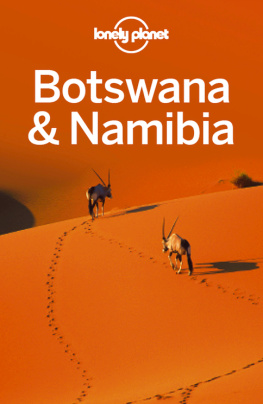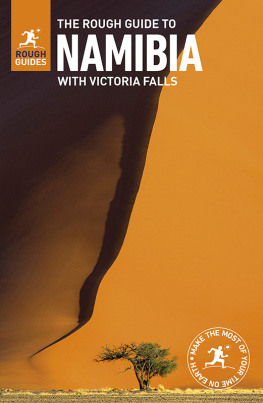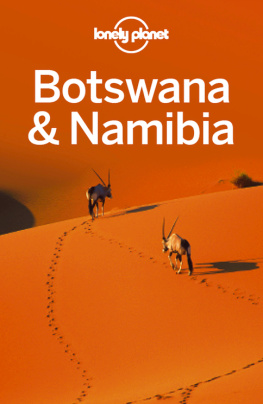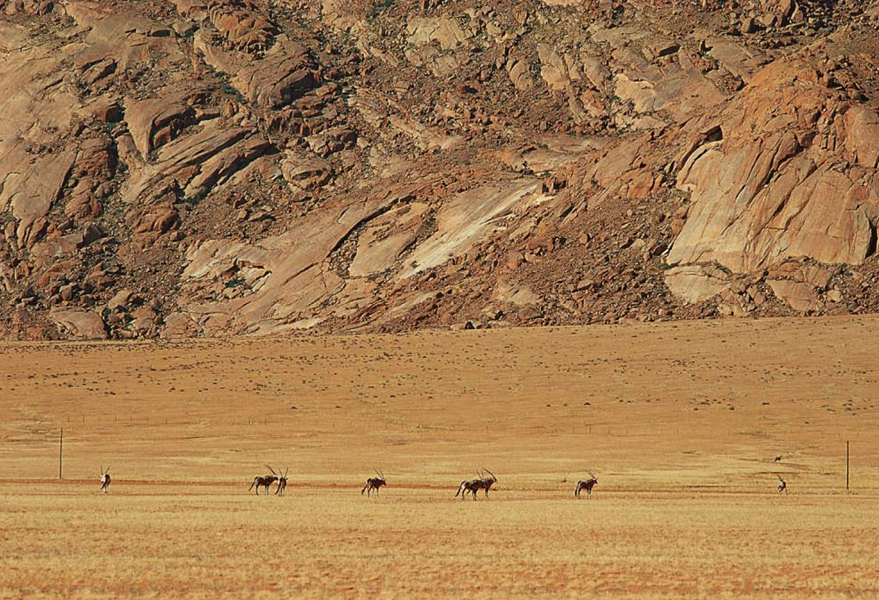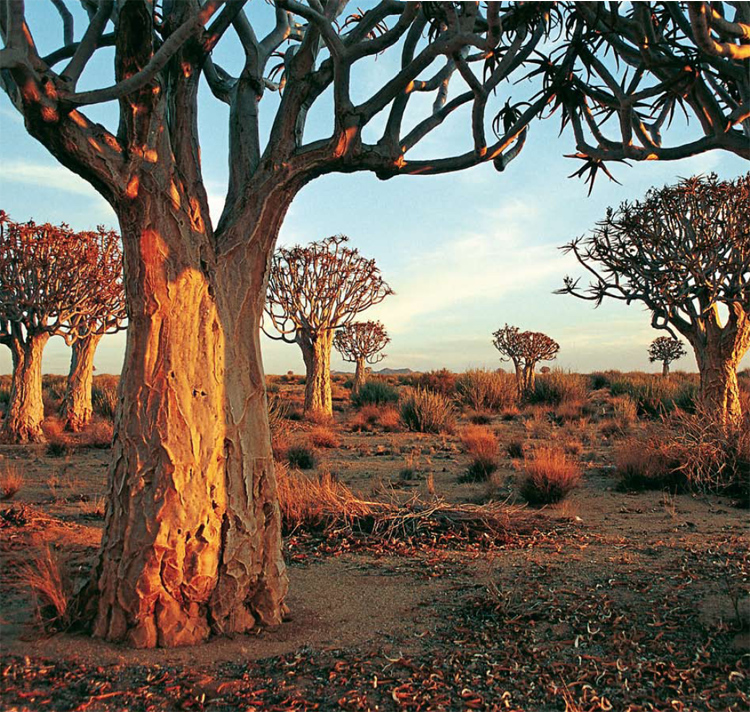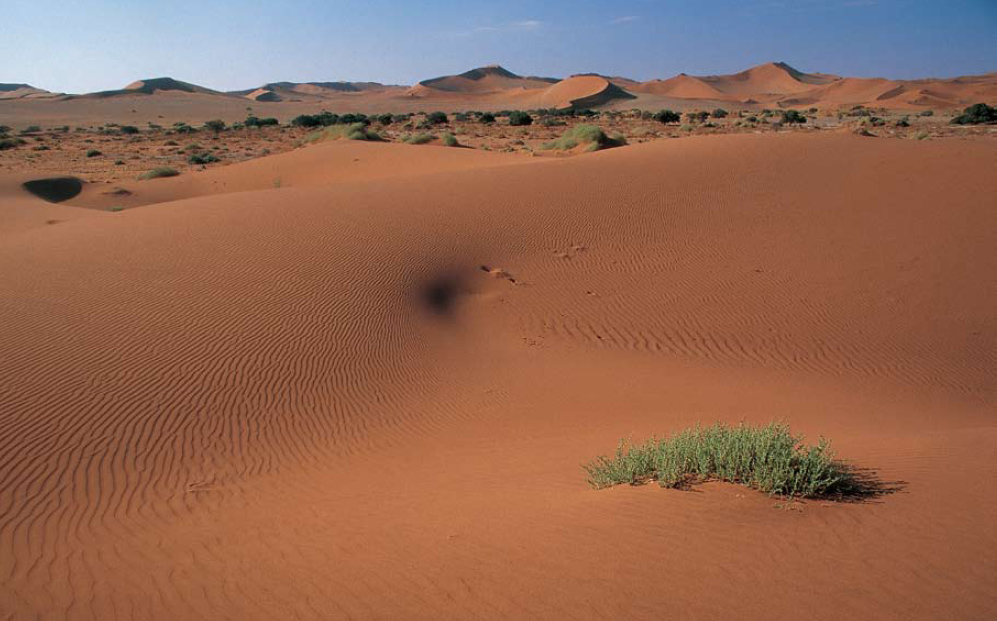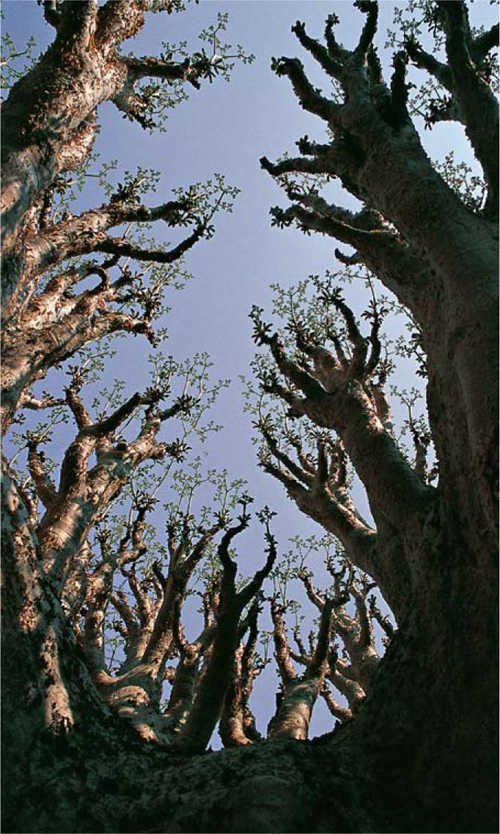Secret
Namibia
Lily & Marcel Jouve
First published in 2009 by Struik Travel & Heritage
(an imprint of Random House Struik (Pty) Ltd)
Wembley Square, First Floor, Solan Road, Gardens, Cape Town 8001
PO Box 1144, Cape Town, 8000, South Africa
Company Reg. No. 1966/003153/07
www.randomstruik.co.za
Copyright in published edition: Random House Struik (Pty) Ltd 2009
Copyright in text: Lily and Marcel Jouve 2009
Copyright in photographs: Lily and Marcel Jouve 2009, with the exception of Douglas
Black/Visualsafari Ltd; and Nigel Dennis/Images of Africa
Copyright in map: Random House Struik, MapStudioTM (base map) 2009
Publishers: Felicity Nyikadzino Berold, Claudia Dos Santos
Managing editor: Roelien Theron
Project co-ordinator: Alana Bolligelo
Editor: Sean Fraser
Geological consultant: Nicole Grnert
Designer: Robin Cox
Proofreader: Glynne Newlands
ISBN 978 1 77007 694 5 (Print)
ISBN 978 1 92054 510 9 (Epub)
ISBN 978 1 92054 511 6 (PDF)
All rights reserved. No part of this publication may be reproduced, stored in a retrieval system or transmitted, in any form or by any means, electronic, mechanical, photocopying, recording or otherwise, without the prior written permission of the publishers and the copyright holder(s).
While every effort has been made to ensure that the information in this book was correct at the time of going to press, some details might have changed. The authors and publishers accept no responsibility for any consequences, loss, injury, damage or inconvenience sustained by any person using this book as a reference. We welcome any updates or comments, which can be emailed to:
Over 50 000 unique African images available to purchase from our image bank at www.imagesofafrica.co.za
Half title page: Gemsbok (oryx) make their way across a plain at the foothills of the Tiras mountains.
Right: Quiver trees ( Aloe dichotoma ) grow in the Gondwana Caon Park private nature reserve, adjacent to the Fish River Canyon.
Contents
Acknowledgements
We wish to thank the owners and proprietors of all the farms, lodges, concessions and private reserves featured in this book, many of whom have become dear friends. Their enthusiasm for the protection of nature and wildlife is exemplary.
We gratefully acknowledge Nicole Grnert, author of Namibia: Fascination of Geology A Travel Handbook, published in 2003 by Klauss Hess Publishers, who kindly undertook to review the geology sections in each chapter. We also want to thank Steve Braine, from Hobatere Lodge, who agreed to proofread all the information on birds and birding in the book, and wildlife biologist Tim Osborne, from Tandala Ridge, who provided us with information on the population counts in Etosha National Park.
Thanks, too, to Susan Mclaren, who translated the original manuscript from French into English.
We also wish to thank our publisher, Random House Struik, in particular publishing manager Felicity Nyikadzino Berold and managing editor Roelien Theron for their guidance and confidence in our project.
The wind has hollowed the fleeting shape of a navel in the sand at Sossusvlei.
Foreword
Not many of us born and bred in Namibia can claim to know our motherland as well as Lily and Marcel Jouve. They used every possible opportunity to explore every contrasting corner of our beautiful country, which ranges from deserts and savannas to rocky and bushy open plains with hazy mirages as far as the human eye can see and way beyond the horizon. They spent hours, from dusk to dawn, listening to the silence of nature and the tales carried by the wind, telling us what the mountains, water, streams, flora and fauna of Namibia offer.
Each photograph in this book is a testimony to the couples revelation that every experience of this country is special and unique. The images of Epupa Falls capture northwestern Namibia as a living vibration, with the thunder of falling waters heard as the ancestral voices of the Ovahimba people. Others, such as those of Dieprivier in the southwest, offer the visitor some indication of special landmarks that evoke a sense of touching ancient sands. An astonishing new world of fantasy unfolds in the northwestern Namibian landscape at Wstenquell Farm, evolving into a realm of surrealistic scenic rocks shaped by the wind a natural sandblasting effect that leads to the creative erosion of the magnificent sculptures of enigmatic gods rising from the earth like waves.
The Jouves awareness of a breathing environment is further evident in their images of the Sossusvlei landscape, one of which evokes a navel. This striking image explains my relationship as an artist with them as individuals, and it is what convinced me that Marcel and Lily enjoy a strong sense of belonging to the universe and its nature. And this is what they found here in Namibia that belonging, the umbilical link through the navel of our soil to the earth.
Some of the images captured by Marcel remind me of the extraordinary weathering of rocks and mountains that have stood the test of time against extreme temperatures, while trees and plants search for survival by growing their roots into the grooves, holes and cracks of the earth to quench their thirst. These colourful scenes become engraved into the minds of visitors to such an extent that even after they are long gone, they yearn for yet another Namibian experience.
This book is ideal for the tourist, scientist, geologist, explorer of remote places, animal and nature lover, artist, poet and, in fact, anyone who simply wants to know where to go, where to stay and who to contact in order to enjoy the silence of nature revealed so uniquely here by my very special friends, Lily and Marcel Jouve.
Joseph Madisia
Namibian artist and director of the National Art Gallery of Namibia
Cobas trees (Cyphostemma currorii) grow among the rocks on Ameib Ranch, in the southern reaches of the Erongo mountains. The thick stem of the Cobas can grow up to seven metres high.
Introduction
We were privileged to live in Windhoek for four years and to be able to travel the length and breadth of Namibia at weekends or on longer trips whenever we could carve out the time. We experienced the country at all times of the year, from the parched and ochre-coloured dry season to the lush and vibrant rainy season.
During the dry winters, nature is motionless. At this time, the silhouettes of bare trees are at their most beautiful and the austerity of the mountains most impressive, the landscape dramatically lunar in appearance. In summer, when the rains fall, the land is transformed, metamorphosed into a green wonderland, where acacia trees burst with yellow-and-white balls and lilies along the roadside open to form spectacular carpets of flowers. It is at this time, too, that travellers discover the strange flowers of the many succulents. We were privileged to breathe the air following the first rains, the powerful scent of scorched earth and damp grasses bringing the promise of life. Rivers flow for just a few hours or even a few days, and short-lived meadows appear in the desert, where animals gather, wild with joy. It is a time of plenty when mothers of almost all species give birth to their young.

